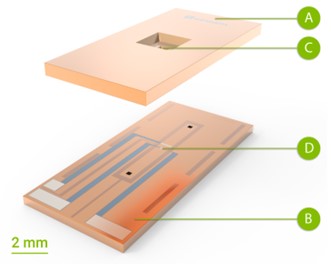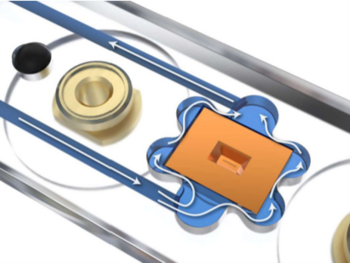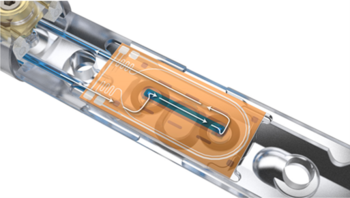New LPEM Conception with DENSsolution’s STREAM System
Liquid Phase Electron Microscopy (LPEM) is one of the most powerful imaging techniques for specimens in liquid with nanometer spatial resolution via Electron Microscopy (EM). This technique allows to study samples properties and reactions requiring environmental liquid conditions. Since the electron optics requires a high vacuum, the sample must be stable in a sealed environment. So that, the key challenges of LPEM measurements are related to the thickness of the flowing liquid, its fluidic control, cross-contamination and tubing clogging. This greatly affects the reproducibility of the measurement (sometimes, the liquid that reaches the sample totally degrades the resolution, making almost nothing visible).
 | Our partner DENSsolution has patented the STREAM solution to overcome most of the common issues affecting LPEM measurements, by re-designing the liquid injection protocol. The core of the STREAM system is its “Nano-Cell”. The Nano-Cell consists of a top (A) and bottom chip (B), which together form a sealed compartment that enables to safely perform liquid experiments inside the TEM. The top and bottom chips both contain electron transparent windows (C and D) for the imaging of the samples. Chips are made up of a very robust membrane, necessary to minimize bulging phenomena caused by liquid pressure. |
The STREAM technology completely differs from the conventional “bathtub” design (on the right). The major disadvantage of the bathtub design is linked to the flow of the liquid towards the sample (on a “flower-shaped” area), which reaches its equilibrium only via diffusion phenomena (very long to reach, even 1 hour to get the liquid to the sample) and without any flow and /or pressure control. |  |
 | Instead, STREAM has a closed loop O-ring with inlet and outlet (on the left) to prevent liquid dispersion inside the TEM column. This allows the liquid to flow between the inlet and outlet by remotely controlling its flux and pressure with the DENS’ patented Liquid Supply System (LSS), as well as its laminar thickness. Thanks to the flow control, it is also possible to control the mass transport, voluntarily introducing gas bubbles at a certain frequency for Kinetic-LPEM studies. On the other hand, if necessary, the dissolution of bubbles is possible thanks to the pressure control, increasing the pressure difference between the inlet and the outlet: in this way, membrane bulging can also be kept under control. |
STREAM increases dramatically the reproducibility of LPEM measurements, as it does not suffer of uncontrolled flows and internal pression variation issues. High-resolution TEM imaging in liquid can be perfectly scored by STREAM, enabling high-quality measurements of electrodeposition, growth of nanocrystals, electrochemical splitting, biological environments of protein and cells and much more.

